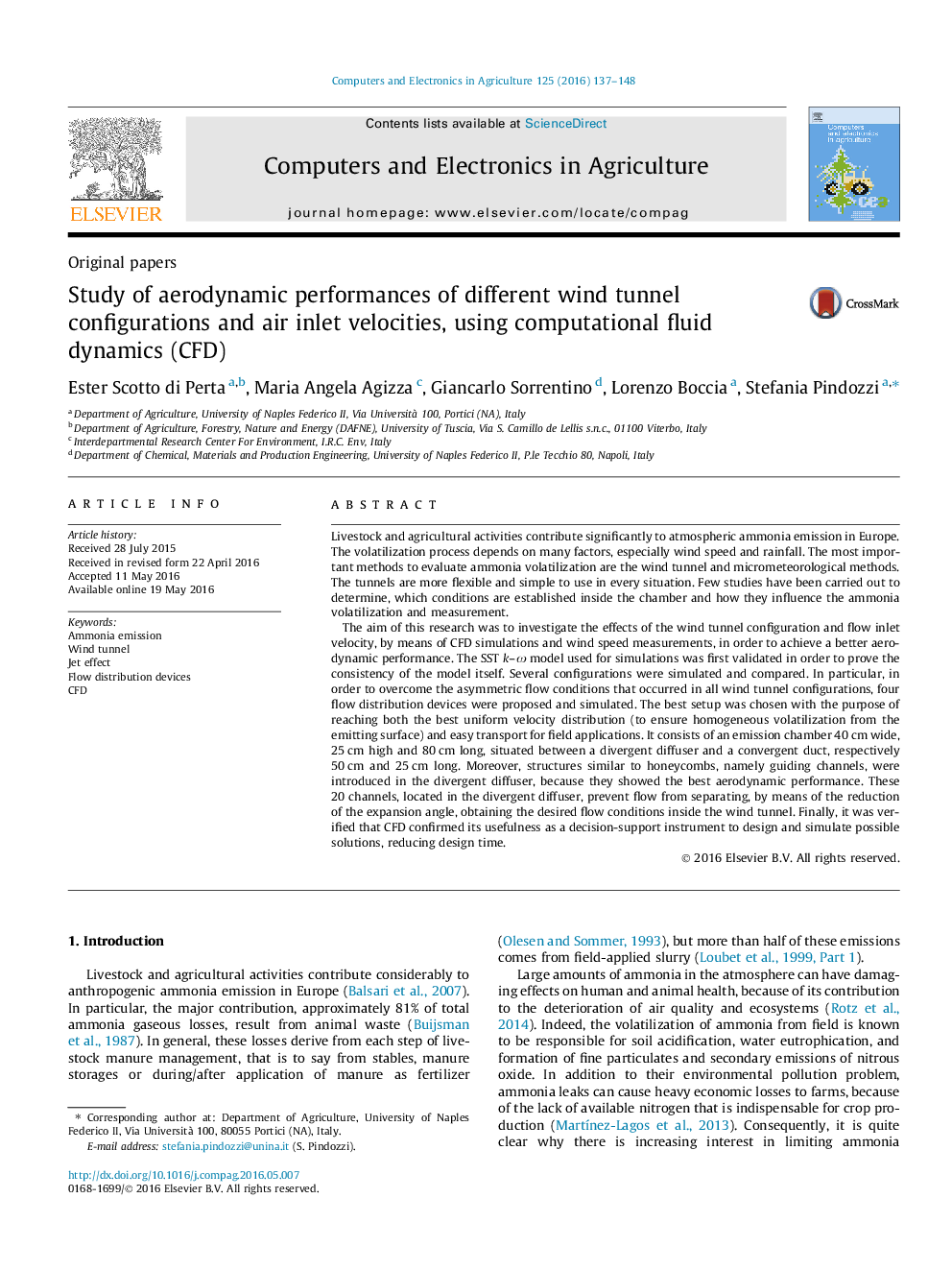| Article ID | Journal | Published Year | Pages | File Type |
|---|---|---|---|---|
| 6540340 | Computers and Electronics in Agriculture | 2016 | 12 Pages |
Abstract
The aim of this research was to investigate the effects of the wind tunnel configuration and flow inlet velocity, by means of CFD simulations and wind speed measurements, in order to achieve a better aerodynamic performance. The SST k-Ï model used for simulations was first validated in order to prove the consistency of the model itself. Several configurations were simulated and compared. In particular, in order to overcome the asymmetric flow conditions that occurred in all wind tunnel configurations, four flow distribution devices were proposed and simulated. The best setup was chosen with the purpose of reaching both the best uniform velocity distribution (to ensure homogeneous volatilization from the emitting surface) and easy transport for field applications. It consists of an emission chamber 40Â cm wide, 25Â cm high and 80Â cm long, situated between a divergent diffuser and a convergent duct, respectively 50Â cm and 25Â cm long. Moreover, structures similar to honeycombs, namely guiding channels, were introduced in the divergent diffuser, because they showed the best aerodynamic performance. These 20 channels, located in the divergent diffuser, prevent flow from separating, by means of the reduction of the expansion angle, obtaining the desired flow conditions inside the wind tunnel. Finally, it was verified that CFD confirmed its usefulness as a decision-support instrument to design and simulate possible solutions, reducing design time.
Keywords
Related Topics
Physical Sciences and Engineering
Computer Science
Computer Science Applications
Authors
Ester Scotto di Perta, Maria Angela Agizza, Giancarlo Sorrentino, Lorenzo Boccia, Stefania Pindozzi,
